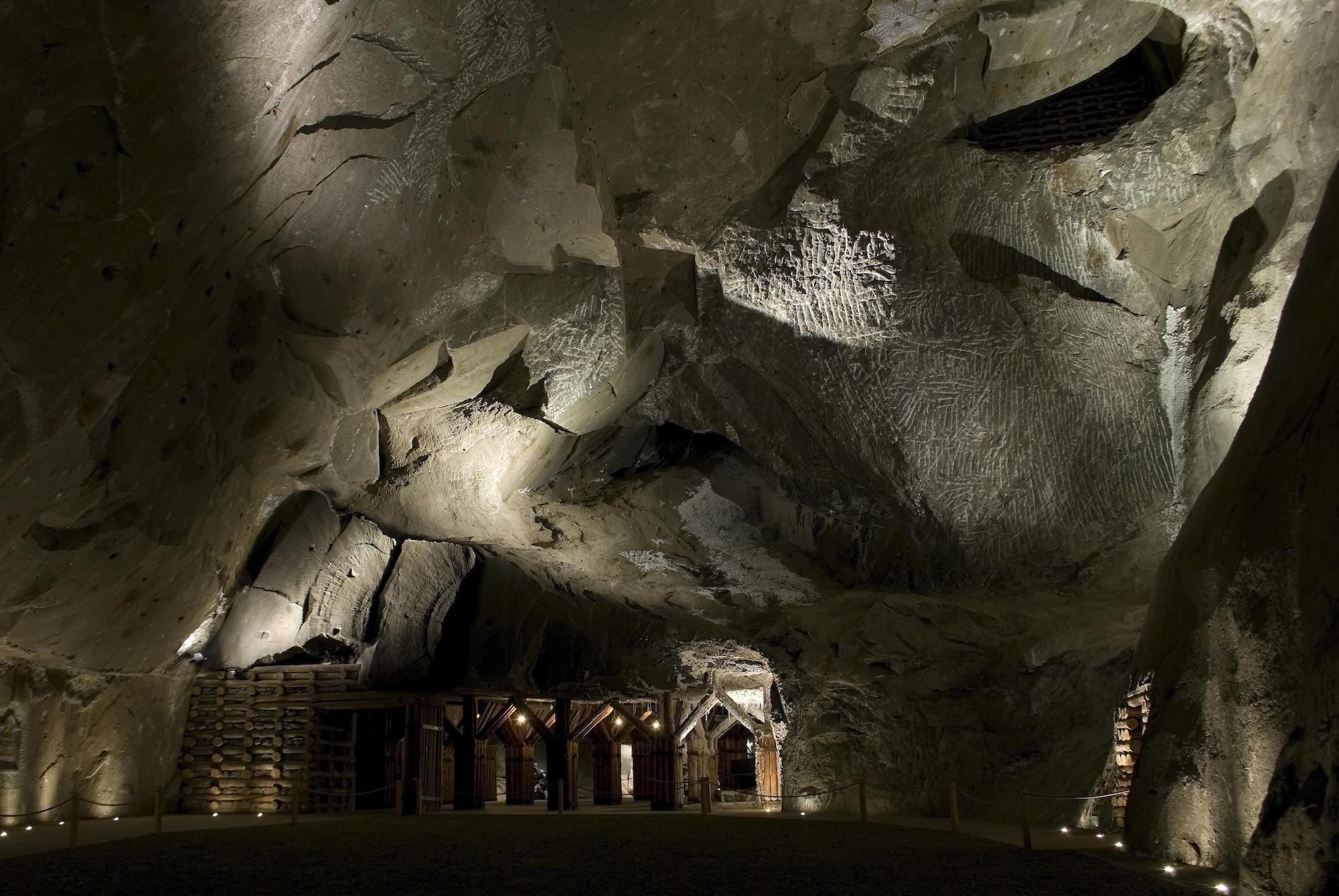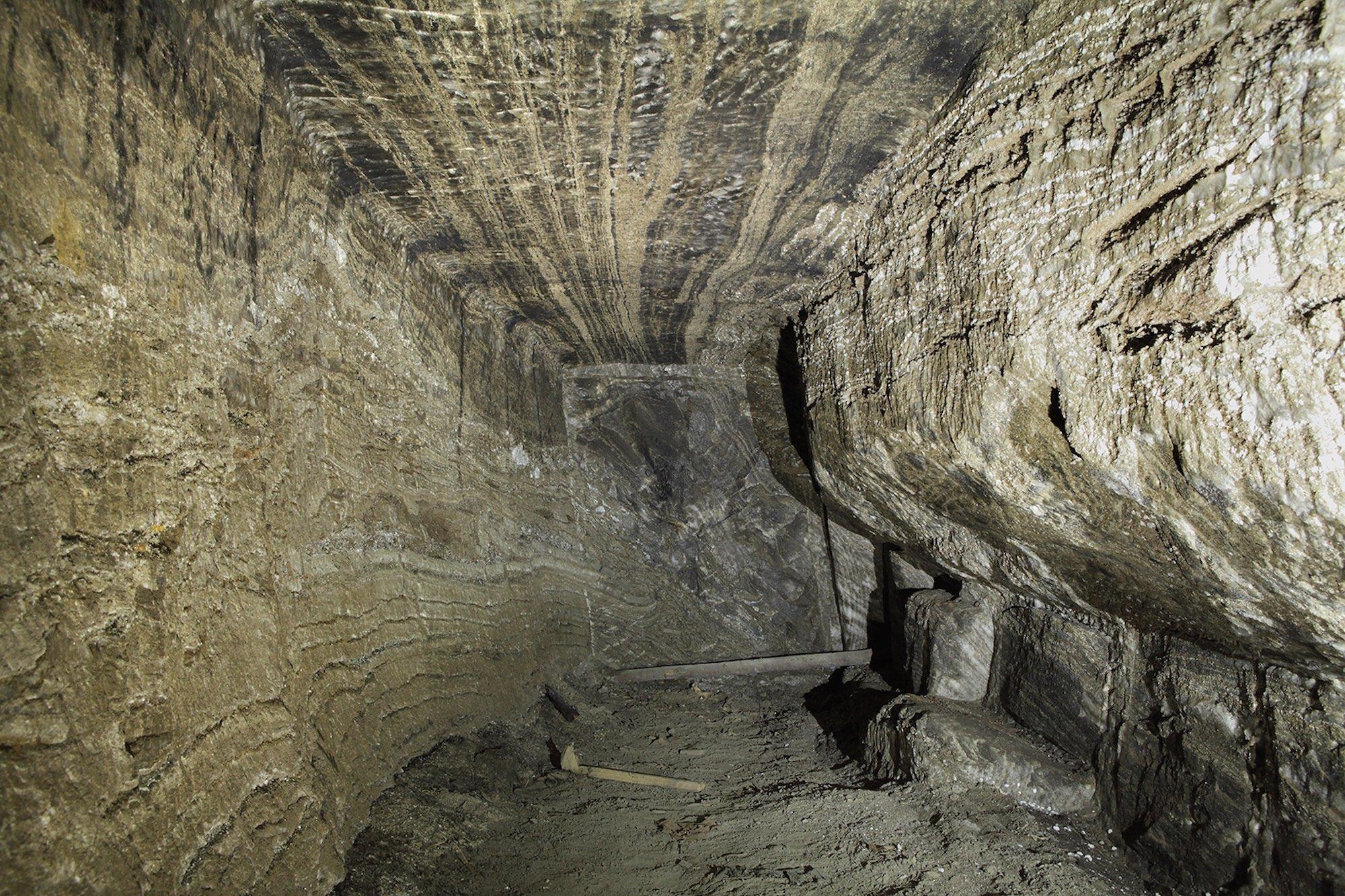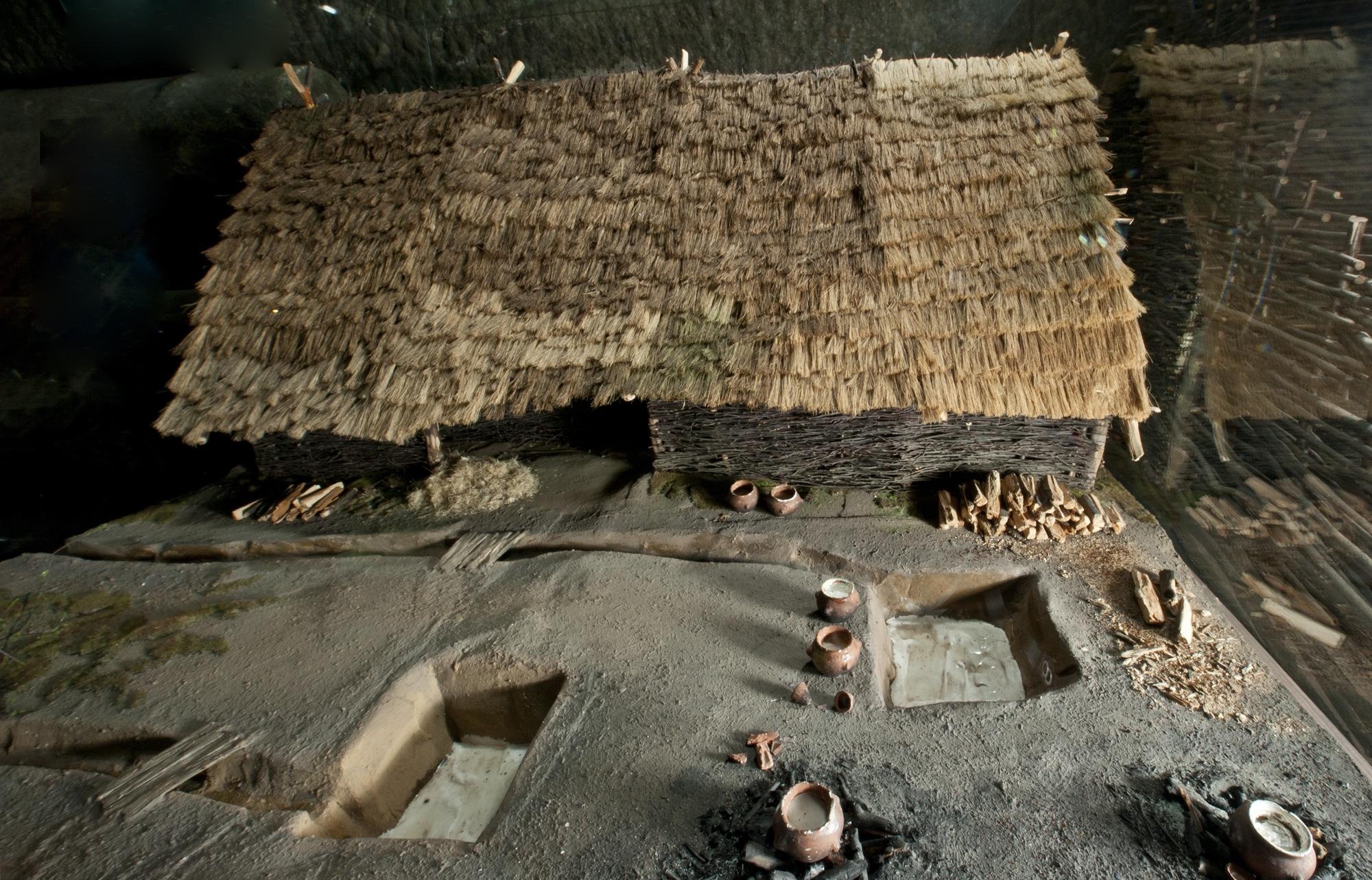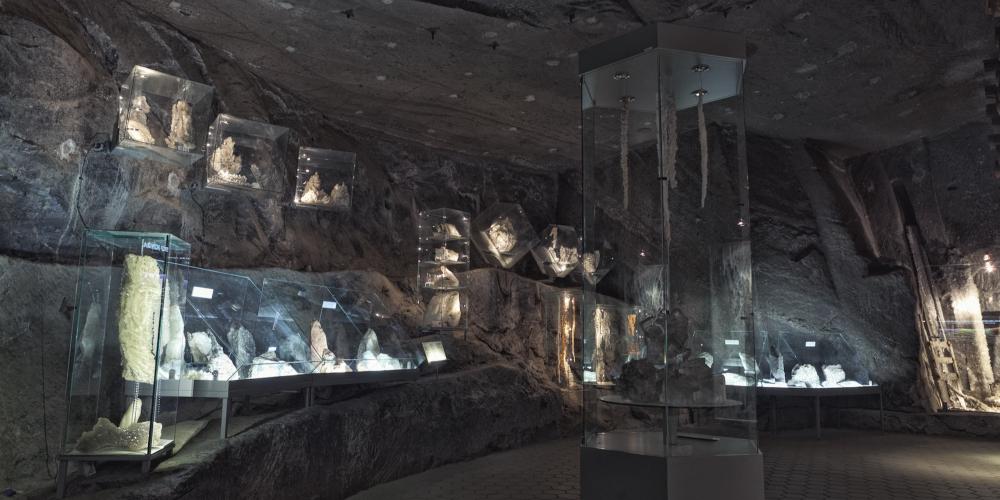The History of Salt in Wieliczka and Bochnia

Looking at the salt walls of the mine chambers in Bochnia and Wieliczka, it is hard to believe this salt was created in the sea. But it's true. About 14 million years ago, this area was underwater. Any life was concentrated on the seashore, where forests and meadows grew, as evidenced by pine cones, conifer leaves, and blades of grass found in the salt of both mines, which you can see in the underground museum. A river likely transported them to the sea, and then the salt imprisoned them forever, like the skeletons of sea corals and shells of molluscs.
But it was not a quiet area. For millions of years, near the sea, in the south, a huge mountain chain of the Carpathians was rising. The process of upheaval was accompanied by earthquakes and volcanic eruptions. The whole area underwent upheaval, the sea dried up, and the massive salt deposits cracked into many pieces under the pressure of the mountains, and were folded, overlapped, and mixed with other types of rocks.

The Wieliczka deposit
The salt deposit in Wieliczka has a narrow band from East to West, which is 10 km (6.21 miles) long, up to 1.5 km (0.93 miles) wide and reaches the depth of ca. 350 metres (1,140 ft) below the surface of the earth. And this one bed consists of two completely different layers. The upper layer has blocks of salt: from small lumps the size of a fist, to huge blocks with volumes of thousands of cubic meters, scattered among other rocks. You won't find such blocks anywhere else in the world. It is these blocks that were used for centuries to create the impressive chambers you can see on the tourist route and in the underground museum. However, in the lower part of the deposit lies, at a certain angle, the second layer—a massive seam of salt, folded in a several places, and thrust into a layer of solids.

The Bochnia deposit
The deposit in Bochnia looks different. It stretches from East to West for 5 km (3.1 miles) with a very narrow band (200 meters, 656 ft) and lies at a depth from several dozen to over 500 metres (1,640 ft). It never had large blocks of salt, or impressive halite monocrystals but its formation is no less complicated. The Bochnia deposit was fully analysed only in the mid-twentieth century. It consists of many different, thin rock layers, which were strongly folded over time. In its upper part, the salt deposits are very steep, almost vertical, but if you go deeper, the salt layer becomes more horizontal. It is the geological structure of the deposit that makes the excavations and, consequently, the routes of exploring the Bochnia Mine, more diverse than those in Wieliczka. The salt on the walls looks different and the chambers and walkways are distinct. It is worth comparing them.
An essential resource
Groundwater, as well as surface water from rain and streams, began to flow through the rocks, dissolving the salt, and emerging on the surface as brine springs. This happened in the areas of today's Bochnia and Wieliczka. However, we do not know when humanity first learned how precious this water is. Salt became vital to humans when transitioning from hunters to farmers, and their new food didn't provide them enough of this life-essential mineral. Furthermore, people quickly noticed salt preserved food well, allowed it to be transported over long distances, improved its taste, helped to tan animal skins, and simply had a good effect on health.

White gold
People who lived in these areas 5,000–6,000 years ago quickly learned to get pure salt from existing brine springs. They obtained it by boiling brine in campfires, in clay pots. The water evaporated, and salt accumulated on the walls of the vessels, producing evaporated salt. Salt became “white gold”—it was extremely valuable, and the locals began to exchange it with neighbouring tribes for other goods, and then sell it for money. At one point, salt itself served as currency.
Hundreds of years passed, and the method of salt-making did not change much. The clay pots were replaced by much larger metal pans. But the sources of salt water on the surface began to dry up, and in the early Middle Ages it was already necessary to dig wells to get to it. Wells were dug deeper and deeper, and there were more and more of them in the area. People noticed the deeper they dig, the more salt they draw. Large settlements of brewers and craftsmen formed around a well, which later became towns — Wieliczka and Bochnia, two of the most important and best known places in the young Polish state.
Then, one day in 1248, the diggers in Bochnia found rock salt completely by accident, while deepening a well by the Babica stream. It was the first discovery of that type of salt in Poland, and a great success that permanently changed the face of this region. Excavation of salt began immediately, and the well, much deepened, became the first shaft of the mine, named Sutoris. Rock salt was also sought in Wieliczka, and found, most probably, in the 1280s. This was how the history of these two famous mines began.

